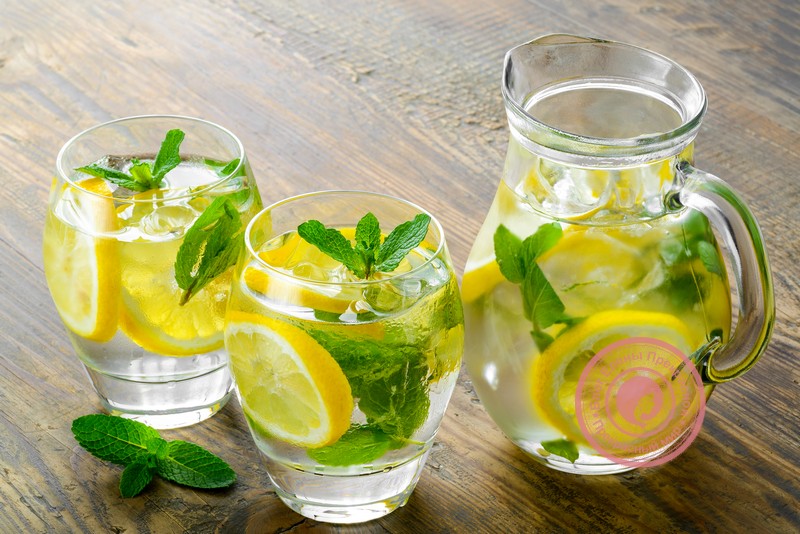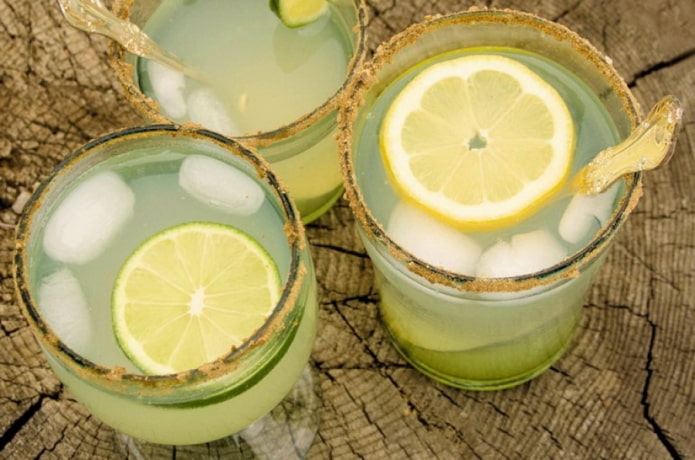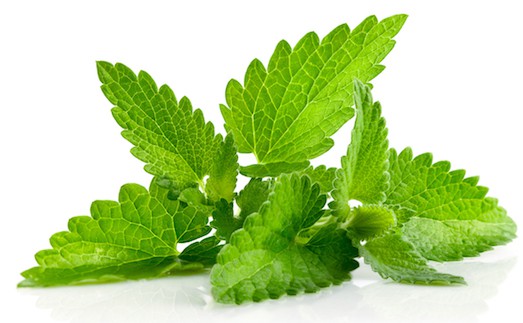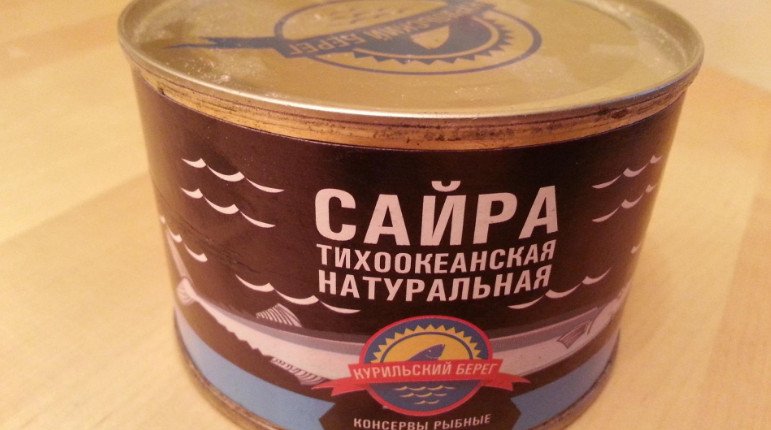Are canned saury fish good for you? Why are canned foods harmful?
Fish is the fastest perishable product. Fresh it is stored in a very small amount of time. The account goes to the clock. Therefore, it comes to us either in very frozen or in canned form. Canned fish will be discussed in this article.
The benefits of canned fish
The fish contains many different nutrients and trace elements. In the process of heat treatment and the addition of preservatives that allow the fish not to spoil, most of them are lost. Despite this, the final product remainsvery useful omega 3 acids are available. They normalize blood pressure and improve blood coagulation.
Also, canned fish is rich in substances such as magnesium and calcium.
Calcium is found in fish bones and is very useful for strengthening our teeth, bones, hair and nails.
Magnesium is involved in the carbohydrate metabolism of our body. Soothes the nervous system and helps to eliminate waste toxins from the body.
The harm of canned fish
Despite the content of nutrients, the harm from the use oflazy canned fish far outweighs the benefits.
Ideally, canned fish should consist of the fish itself and preservatives of salt and oil. Let's take a closer look at them.
Salt contributes to the accumulation of adipose tissue in the body. Increases water intake. Increases blood pressure than negates the effect of omega-3 fatty acids. It is deposited on the walls of blood vessels and makes them less elastic.
Oil. Most often, canned fish uses sunflower oil. Despite the plant origin, this is a very high-calorie product. 100 grams of sunflower oil contains 899 kilocalories. If you want to lose weight, you should very strongly limit the use of canned fish.
When oil is consumed in large quantities, a large load is created on the liver and stomach.
If, after opening the can, you smell rancid fat, and the fish has a brown-orange (rusty) color. These signs indicate that fats were oxidized in canned food. You can’t eat such canned food. The carcinogens they contain can harm your body.
All of the above is compounded by the fact that canned food often uses not the highest quality sunflower oil.
 Do not forget about the tin can itself. Often manufacturers try to save on almost everything. And the tin can is made of metal, which reacts chemically with canned goods. As you know, this does not add to their benefits. Recall for yourself how often you felt a taste of metal while eating canned fish.
Do not forget about the tin can itself. Often manufacturers try to save on almost everything. And the tin can is made of metal, which reacts chemically with canned goods. As you know, this does not add to their benefits. Recall for yourself how often you felt a taste of metal while eating canned fish.
The so-called natural preservatives are described above. If you pick up a can of canned food and read the “composition” on its label. You will find many more different preservatives. They vary depending on the manufacturer and the type of canned food, so this article will not describe them in more detail. There are just a lot of them.
Once you have opened a can of canned fish, you must immediately eat them or use to prepare any dish. Open canned foods spoil very quickly. And you risk getting food poisoning.
Botulism
The botulism wand develops only in an airless environment, therefore for a long time a closed can is an ideal place for its reproduction. In fact, the botulism stick itself is not dangerous. The toxin produced during its life is dangerous. Unfortunately, it is impossible to distinguish infected canned goods from harmless ones by any external qualities. Without a chemical analysis, this toxin does not manifest itself.
findings
Summarize. It is not worth finalizing about the benefits or harms of canned fish. It is better not to eat them every day, if you have at hand a place where to cook fresh food. Freshly prepared fish is much healthier and less harmful to health than canned fish. But if you don’t have a refrigerator or a freezer at your fingertips, then canned fish may well give you some of the nutrients contained in fresh. Eating fish in jars every day is not worth it.
Canned foods are vegetable or animal products prepared in a special way to significantly increase the shelf life. For their storage, hermetic packaging is used to protect the product from environmental influences.
In addition, canned foods are those products whose shelf life has increased during the cooking process. These include salted cabbage, dried, salted, fish, cucumbers, smoked meat, dried fruits, mushrooms, frozen foods. The most popular for a long time remain a variety of canned fish and meat stew.
In general, when it comes to proper, healthy nutrition, canned food is not meant at all. Rather, they are classified as harmful products and try not to consume. However, long-term storage products greatly facilitated the life of mankind. You can not do without them for long trips. They help out when there is no time for cooking. But most importantly, they put aside the threat of hunger for a long time, seriously threatening humanity before that. Canned food - benefit or harm?
Let's get it together:
Is there any benefit from canned foods?
Undoubtedly, the frequent use of canned goods does not benefit the body and they cannot replace fresh products. But they can help out when fresh food is not at hand or not enough, and even provide the body with a certain amount of useful substances.
It is believed that during heat treatment, they lose all vitamins. But this is not so. After heating, some substances not only do not disappear, but become even more active. Such substances include antioxidants lycopene and betacarotene.
Also, the mineral salts of calcium and magnesium do not disappear anywhere. The same fully applies to the very useful omega-3 fatty acids that are stored in fish products.
We must not forget that some canned foods have recently been considered almost the only supplier of vitamin C in the winter. It's about everyone's favorite sauerkraut. The product is the main among winter preparations, contains a huge amount of vitamin C, antioxidants. But I must say that cabbage homemade salted, properly salted, seasoned is more useful. Vinegar is often added to cabbage from the store, which reduces its benefits.
Vegetables and fruits frozen at home are the best option for autumn harvesting. They retain almost all useful properties. It cannot be said that homemade pickles, marinades are very useful, but vegetables and fruits for them are usually grown in their garden, which means they are environmentally friendly. Opening a jar of cucumbers, preserves, compote - you can be sure that they do not contain artificial preservatives, emulsifiers, stabilizers, flavor enhancers, etc.
In addition, they add variety to the winter menu. And it’s simple - they are very tasty, which means they increase the mood, which is also useful for people.
What is their harm?
Of course, there are other opinions. Many experts consider canned food harmful and unacceptable for human nutrition. This is not entirely true, but you should also not lose this statement. When purchasing such products, pay attention to the list of ingredients and the method of production.
For example, canned goods produced in accordance with TU are always made from cheaper components. They are prepared using offal, cartilage, veins. In their composition you will always find nutritional supplements, a large amount of salt (sugar), soy proteins, flavorings, flavor enhancers, colorants (sodium nitrite). All this does not make them healthy. Imported long-term storage products are usually also not of high quality. Foreigners rarely eat them, attribute them to low-grade food.
Therefore, when buying such food, pay attention to the nutritional composition, give preference to those that are made according to GOST.
The times of total deficit have already passed, any products can be bought at the nearest supermarket. But the habit of home-made preparations for the winter remained, and many housewives “turn the cans in reserve”, which are then stored for a year, sometimes more. They also come with purchased canned goods, which are stored “just in case”, and then stored, not noticing the expired shelf life. And it is very dangerous for health, and sometimes for life.
There is an opinion that it is impossible to leave the remains of canned food in a metal can, since there they spoil very quickly. However, they will deteriorate no less quickly in any other dish. Therefore, if you opened a can of canned fish or stew, try to immediately eat or use for cooking. Remember that the greatest harm of such products is the high risk of food poisoning.
Of course, opening a jar of homemade tomato cucumbers, compotes, mushrooms in winter is a special pleasure. But also we must not forget that the bank may lurk mortal danger - botulism. This very serious infectious disease can affect a person after consuming poor-quality or expired canned food.
In conclusion, I want to note that, of course, natural products are much better, more useful than any canned food. But modern man can no longer do without them. Therefore, if you take into account the expiration date, carefully consider the preparation of homemade pickles, you will not use them often, knowing the measure - then you will not do any harm to your health. Be healthy!
What could be simpler and more familiar - canned fish! It seems that they have always been, and at any moment can help out if you suddenly need to cook a delicious dish or build a quick lunch. It seems that everything is known about them, because these are ordinary canned fish, the benefits and harms of which have been discussed many times. But every time all vibrations are rejected by their unconditional benefit. And these colorful jars have earned their well-deserved fame and veneration throughout the world.
However, this was not always the case, and it is difficult to believe that two centuries ago no one knew or heard about such delights. Canned food then simply did not exist.
Interestingly A prototype of canned food was found not so long ago during excavations in one of the Egyptian pyramids - in a securely sealed vessel, ancient remains of baked game, completely filled with olive oil, were found. Despite more than three thousand years of storage, they looked and smelled quite edible. Of course, no one tried them!
This method of preserving food was forgotten, and re-invented relatively recently - only about 200 years ago. At first it was canned meat, then they began to make them from fish, and from everything else.
A bit of history
Canned food was invented in France at the end of the 18th century. Chef Nicolas Upper presented at the competition an original way of long-term storage of products. Over time, he improved his method, and these products from elite, available exclusively to the upper class, turned into almost everyday food. They became so popular that soon after the fall of Napoleon, a store was opened in Paris that sold only canned goods. The hostesses liked them - after all, the products were guaranteed fresh, and the cooking time was significantly reduced. The cooking itself was made simple and convenient.
Nicolas Upper was deservedly awarded the title of "Benefactor of mankind." His idea was to create hermetic packaging, into which any impact of the external environment, primarily air, could not penetrate. So there were canned food.
Interesting The first cans were made of a very thick and durable metal layer - the thickness was about 1.5-2 mm. they could only be opened with a chisel and hammer. And still, not everyone could handle it. At first, canned goods were not used in everyday life, they were given out to army cooks during military campaigns in France during the time of Napoleon.
Now canned fish are made from any kind of fish - from the simplest ones that can be caught in a nearby river, to rare and exquisite ones found in the deep sea. They are really very convenient - the fish in them is ready to eat, and the bones are so soft that they are easy to chew and it is almost impossible to choke. One medium-sized can of canned food is enough to make dinner for a family of four.
The benefits and harms of canned food
Benefit
The fish contains a huge amount of substances necessary for man, vitamins, trace elements. Some of them in the right form are found only in fish, especially marine. There is even a version that the human brain began to actively grow and develop exactly when people began to eat fish. After all, it contains a lot of phosphorus, calcium and other substances that are not afraid of heat treatment, do not decompose from it, and do not disappear anywhere.
What is contained there
- unsaturated fatty acids Omega - 3, Omega - 6, Omega - 9, necessary for normal brain nutrition.
- Animal protein necessary for the normal functioning of the human body.
- A high content of calcium, magnesium, phosphorus, iodine - all these trace elements in fish are perfectly balanced. And their use is necessary for the good work of the entire human endocrine system.
- during pregnancy - because the phosphorus contained there will help the baby's brain develop better, and magnesium normalizes the nervous system.
- with diabetes and thyroid problems.
- with cardiological problems.
- athletes with heavy physical exertion.
The benefits of canned fish today is not in doubt, but not everyone can use them. They also have contraindications.
Harm
With canned fish should be very careful and careful. If violations were made during their manufacture, if they were stored incorrectly, deadly microbes that can begin to multiply in the bank can start to develop botulism. True, such a jar is easy to detect - it swells, and when it is opened, a characteristic hiss from the outgoing air is heard. If such a jar fell into your hands, its contents are CATEGORALLY IMPOSSIBLE, the jar must be opened to the end, the contents should be discarded.
If these canned foods are overdue - they should not be consumed, you should be careful if there is little time left before the end of this period. Their expiration date is indicated in the second row on the lid of the can.
Canned fish should be used with caution for people with kidney disease - due to the sufficiently high salt content in them, they can be harmful to them.
They are not suitable for baby food, it is better not to give them to babies under 3 years old.
Tip Open canned fish cannot be stored in the original tin can for more than two hours - there the active process of oxidation begins and the fish becomes harmful, even dangerous to health. If possible, transfer it to glass or enameled dishes and close the lid. It should be stored in the refrigerator.
Calorie content
Canned fish is simply delicious food, and often their taste is so bright that only because of it they are preferred over fresh fish. Manufacturers are clever in the development of more and more new recipes, types, various additives, in the method of preparation. Each manufacturer sincerely praises its own brand, talks about its advantages. There are sometimes a dozen canned foods from the same fish in stores, only producers are different. And how can I figure out what is better to take, what to prefer. And whether everything that is told about them is true - this must be understood.
First of all, we may be interested in whether they are rich enough, what is the calorie content of canned fish, their nutritional value.
It depends on the fish itself, and on what it is cooked in. For example, oily sea fish will be calorie river and small. And cooked in oil will be more caloric exactly the same, but in tomato.
Some varieties of fish are traditionally cooked in the same way, although the quality of the finished product is different.
Of course, canned foods also differ in the way they are prepared. The most useful are those prepared in their own juice - without the addition of other fats, but only with spices. These types of fish are often very large to fit in a small jar - they are cut with suitable pieces, and already put into jars.
But if the fish is small, such as sprat, they are smoked for a start, and then they are put in cans whole. Thanks to smoking, this fish acquires its mouth-watering golden hue.
Types of canned food
NaturalThey are made from whole fish, only salt is added from spices. Usually these are the most expensive, “noble” varieties of fish - salmon, sturgeon. Such fish undergoes thermal treatment only during sterilization. Such fish do not undergo preliminary chemical treatment, are not pickled, and are not salted. Of course, these are the most expensive and rare canned goods.
When processing these types of fish, the fins and tail are cut from them. There are a lot of cut pieces left, which are also preserved according to the same recipe as whole pieces. They do not differ in taste, except for the size of the pieces. But their cost is much lower, and they are available to everyone. Such canned food is used for the preparation of various fish salads, soups, snacks.
After cooking
This type includes most of the popular canned food - saury, herring, mackerel, sardines, and so on. This is a smaller fish. It is pre-smoked or salted. Sometimes for preservation fish for such canned food is pickled. Canned food comes out cheaper. But for such canned food, the fish is still sterilized before canning.
Preserves
These are the simplest canned foods that are made from the smallest fish. They do not undergo the sterilization process, their shelf life is very short - only two to three weeks.
Other canned fish
Canned fish from offal are also referred to fish - for example, cod liver. It is very high-calorie - about 300 kilocalories per 100 grams, rich in a variety of unsaturated fatty acids and very useful.
Caviar - sturgeon, salmon. There are other types of it, from cheaper varieties of fish.
There are also various pastes - from sprats, from herring, other types of fish. They allow you to significantly diversify the list of canned fish dishes.
Cooking canned mackerel in oil
If you find an error, please select a piece of text and press Ctrl + Enter.
Preservation was invented for the same reason that mankind came up with a refrigerator, only the first one appeared in the ancient world and never came out of food. The successful storage of surplus products for six months to a year was the key to survival and a well-fed winter, and over time, conservation was useful to provide food for travel, long trips, wars, and swimming. The first conservation experiments were not very impressive: unless starving sailors could eat corned beef for both cheeks; but the improved methods of preserving products made such food not just edible, but tasty, so even the owners of well-equipped kitchens, who have the opportunity to buy fresh products at any time, paid attention to it.
First of all, canned products are captivating by the simplicity of their use: you open the jar and you're done! Especially convenient are canned foods that are difficult to tinker with, for example, beans or beans: they need to be soaked for a long time in water and sometimes boiled for hours, and there are no problems with legumes from a jar. Another factor is speed: you take a jar of canned peas, knock it over in a bowl of salad and thereby save a lot of time that you would have spent if you cooked fresh or frozen peas. In addition, the mass - apart from exclusive and exotic products - canned food is inexpensive, stored for a long time, can be a "reserve for a rainy day." In general, solid advantages and benefits. Why, then, should not get involved in canned goods?
Because, in spite of all the “pluses”, canned foods are in no way first-class food - in many ways - and that's why.
The danger of botulism. The causative agents of botulism are in the soil and in this way - through products - can enter the human body. But the whole trick is that botulinum toxin is dangerous, which is generated by botulism pathogens in an environment devoid of air. And the canning process itself creates the ideal environment for the production of botulinum toxins - even if all the technologies were followed. Moreover, botulinum toxins can be present in both home and factory canned food.
Important! Botulinum toxin may not be detected in any way, but often infected canned food swells, looks spoiled. Therefore, in no case should you eat canned food with a swollen lid, a damaged jar, etc. The smell, color and appearance of the product inside must be absolutely healthy, normal. Especially be careful with canned mushrooms (although botulinum toxin can be in any - meat, fish, vegetable).
But the harm of canned foods is not limited to the danger of colliding with botulinum toxin, there are other reasons to avoid canned food:
- Excessive heat treatment. The processing to which canned foods are subjected kills most of the beneficial trace elements, vitamins. After such processing, the lion's share of products turn into inert food objects consisting of proteins, fats and carbohydrates. They saturate, give energy, but do not bring that benefit which is in fresh products.
- Doubtful products. When preserving, the taste of products is very often suppressed, which provides unscrupulous manufacturers with an extensive field for all kinds of fraud with raw materials. So watery carrots, rotten cabbage, stale meat, rotten fish, etc. get into canned food. Cheap canned meat and mixtures are especially dangerous in this regard. If canned food contains a large amount of fats and oils, oils are not always of good quality. Here you can give only one piece of advice: carefully read the composition on the label, trust your taste and try not to buy frankly cheap canned food.
- A lot of "chemistry". Canned food is very rarely dispensed with synthetic additives - flavor enhancers (e.g. sodium glutamate), flavors, colorants, preservatives. All this is intended to give the product a marketable appearance, smell and taste, as well as to increase the shelf life of canned food. Synthetic additives are not fatal; seldom what finished products do without them nowadays, but nevertheless you cannot name them useful. In addition, their concentration in canned foods can be quite impressive.
- A lot of salt, sugar, vinegar. Even if chemical additives are not included in canned food, as a rule, they are full of salt, sugar and vinegar. Excess salt disrupts the water-salt metabolism in the body, sugar is a fast - and harmful - carbohydrate, spoils teeth and promotes obesity, vinegar and acids in large quantities can harm the digestive system. When using canned food, it is very difficult to monitor how much salt and sugar enter your body, which is why you can eat both of them more than you intended.
You should not demonize canned food: firstly, they are really indispensable in some cases (for storage in the country, for traveling), and secondly, if you use them occasionally, if necessary, or 1-2 times a week, there is nothing wrong with your health will not happen. Especially if at the same time you generally eat right, try to cook a lot on your own, regulate the amount of sugar and salt in your diet. Choose canned goods wisely and use them only for their intended purpose!
Marina Kopytko
Candidate of Medical Sciences, dietitian, head physician of the Healthy Nutrition Clinic of the Weight Factor, author of the books “I Can Lose Weight” and “I Can Lose Weight Easily and Simple Day after Day”
– In the absence of fish, canned food can be a valuable addition to the diet and will benefit the body, but provided that you follow simple rules...
How many groups?
Depending on the method of preparation and purpose, canned fish are divided into:
- natural in own juice,
- in tomato sauce
- in oil,
- pastes and pastes,
- canned fish and vegetables
- diet
- for baby food.
Read how to choose the right canned fish.
Weaknesses of canned fish
Ideally, canned fish should consist of fish of one particular species (and not allsorts) and salt. Salt in this case not only enhances the taste, but is also an excellent preservative. However, during conservation, as a rule, the simplest, high sodium rock salt is used. Moreover, salt in canned food is often more than the norm, which provokes fluid retention in the body, increased blood pressure and edema. That is why such products not recommended for hypertensive patients and people with impaired renal function.
In addition to fish in its own juice, canned fish are often found in oil and tomato sauce. The addition of oil, most often sunflower oil, increases the calorie content of the product and stimulates the release of bile. Therefore, these types of canned food contraindicated in people with biliary dyskinesia and overweight.
What is the use?
- Fish refers to perishable products, immediately after catching it must either be frozen or processed. The production of canned food increases the shelf life of fish, makes different varieties of fish available.
- Canned products retain some of the beneficial properties of fresh fish: macro- and microelements (phosphorus, magnesium, calcium, potassium, etc.), partially vitamins (for example, group B). Unfortunately, during heat treatment, most of them are destroyed.
- In canned fish fatty varieties, omega-3 fatty acids are retained.
- All these are very important components for our immunity, maintaining healthy bones, nails, hair, skin, as well as normal metabolism.
- Calorie-based tomato dressing is significantly lower than oil; Moreover, if the sauce is cooked correctly, it does not have artificial flavors, thickeners, and acetic acid, then it becomes a source of lycopene, a substance from tomatoes that has anti-cancer activity. And this can be attributed to the undoubted advantages.
Bank jar strife
Sometimes, when opening the cans, the smell of rancid fat or the dark brown (rusty) color of the fish attracts attention. The thing is that during prolonged storage (especially if temperature conditions are not observed), fish and oil can enter into chemical reactions with the inside of the can, and as a result the product deteriorates. Throw such a jar without regret.
In addition to cans, plastic containers are used. The shelf life of such products is much shorter, and more stringent temperature conditions are established for it: preserves are stored for no more than six months and preferably in a refrigerator at a temperature of no higher than 10–15 ° С.
Separately about sprats
For the production of this type of canned food, hot smoked fish is used. And now sprats in oil are made not only from smoked, but also from fresh canned fish using the food supplement "liquid smoke".
Smoke, especially chemical, which is used to give the fish a haze and specific coloring, at the same time increases the number of carcinogens in canned food.
It is estimated that in order to neutralize the harmful effects of one can of sprats, such an amount of antioxidants is needed that is enough for a week of “right” life. Therefore, nutritionists do not recommend eating these foods.
For reference
In the Soviet Union, it was one of the most beloved snacks. Not a single festive table could do without sprats. At present, any small fish - Baltic, North Sea, Black Sea sprat, kilka, sprat, herring, and herring juveniles - are the raw materials for the production of this canned products. Today, sprats are called any canned small smoked fish.
It can not be argued that canned fish can fully replace fresh fish.At the same time, in the absence of fish, canned food can be a valuable addition to the diet and will benefit the body, but provided that you follow simple rules.
Canned fish should not be eaten more often 1-2 times a week.
- Canned food is in priority in its own juice or in tomato dressing. It is desirable that these were tuna, salmon, beluga, pink salmon, catfish, chum salmon, sturgeon, halibut, blue whiting, saury, sardinella, horse mackerel, hake and herring.
- The ideal product for losing weight is tuna and hake.
- It is not recommended to eat canned food for hypertensive patients, people with diseases of the kidneys, liver, gastrointestinal tract and a tendency to edema.
Information for Parents
When buying "baby" canned fish (most likely they will be in the form of meatballs or soufflés), carefully read the label, make sure that they are suitable for your baby by age and are recommended for baby food. They will have much less salt, and from additives only black pepper and bay leaf are allowed.
Children can be given "adult" canned fish in their own juice, but only from the age of five and in the form of soup or adding a little to the salad in the absence of ordinary fish.
When citing this material is required.



















